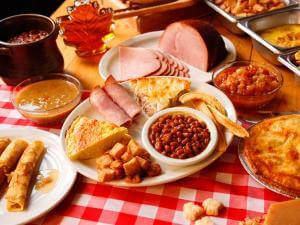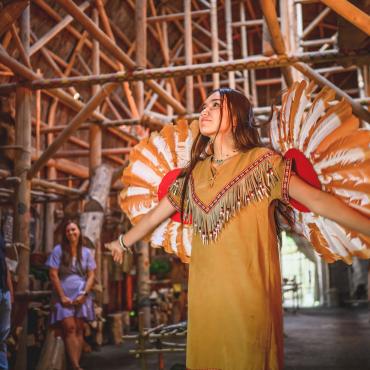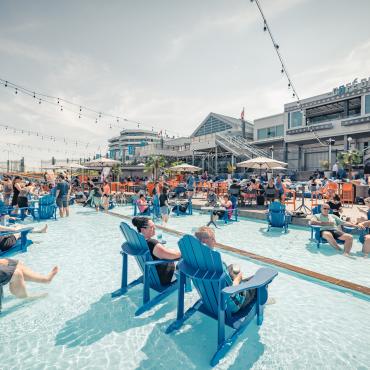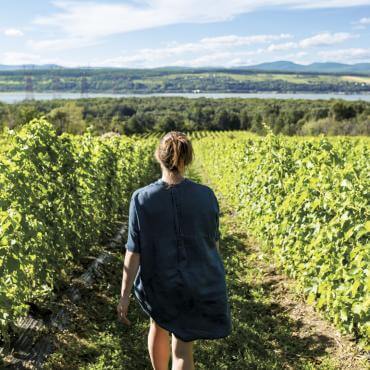Sugar Shacks

The joyful melody of fiddles, accordions, harmonicas and wooden spoons fill the air as local musicians play rigodon, creating a festive atmosphere. Sit along tables overflowing with traditional Québécois dishes that beckon with promises of full bellies.
Sugar Shack Traditions
 Francis Gagnon
Francis Gagnon
Visiting a sugar shack is one of the best ways to celebrate the beginning of spring. What is the purpose of a sugar shack? Gathering in large rustic log cabins, families sit down to long tables with checkered tablecloths to enjoy a hearty maple-soaked meal of traditional Québécois cuisine.
There is often a small stage where local musicians play Québécois folk songs, rigodon and square dancing music. Soon, feet are tapping, hands are clapping, and smiles abound as people dance.
Outside, folks enjoy maple taffy on snow. Maple syrup is boiled, then poured in lines on clean snow. As it cools, popsicle sticks are used to roll the maple taffy into a chewy lollipop.
After eating all things maple, many walk off their meal, some simply enjoy the first warmer days while chatting, others go on a tour of the shack where the maple syrup is made or on sleigh rides (when offered).
Sugar Shacks in Québec City
The ideal time to visit a sugar shack typically spans from late February to the end of April, and it is advisable to make reservations to enjoy a meal there.
Some sugar shacks offer meals year-round, subject to a sufficient number of reservations. These establishments are identified by an asterisk (*) in the list below. We recommend to confirm directly with the establishments before visiting.
Here are some of the sugar shacks in the Québec City region:
Sugar shacks in Old Québec

There are no traditional sugar shacks in Old Québec, but it is still possible to enjoy some maple products at these locations:
La Petite cabane à Sucre de Québec
Located in Petit-Champlain, La Petite Cabane à Sucre de Québec is a shop that offers a range of maple products. Visitors can also enjoy maple taffy on snow, just like at a traditional sugar shack.
La Bûche Restaurant
This restaurant specializing in traditional Québécois cuisine offers several typical sugar shack dishes on its menu.
Maple Syrup Museum
At Jean Castor - Musée du sirop d'érable, explore the maple syrup production process in a fun setting with charming little robotic beavers. While you can't sample maple products on-site, it's a great activity for a family outing, especially with kids.
Sugar shacks on Île d'Orléans
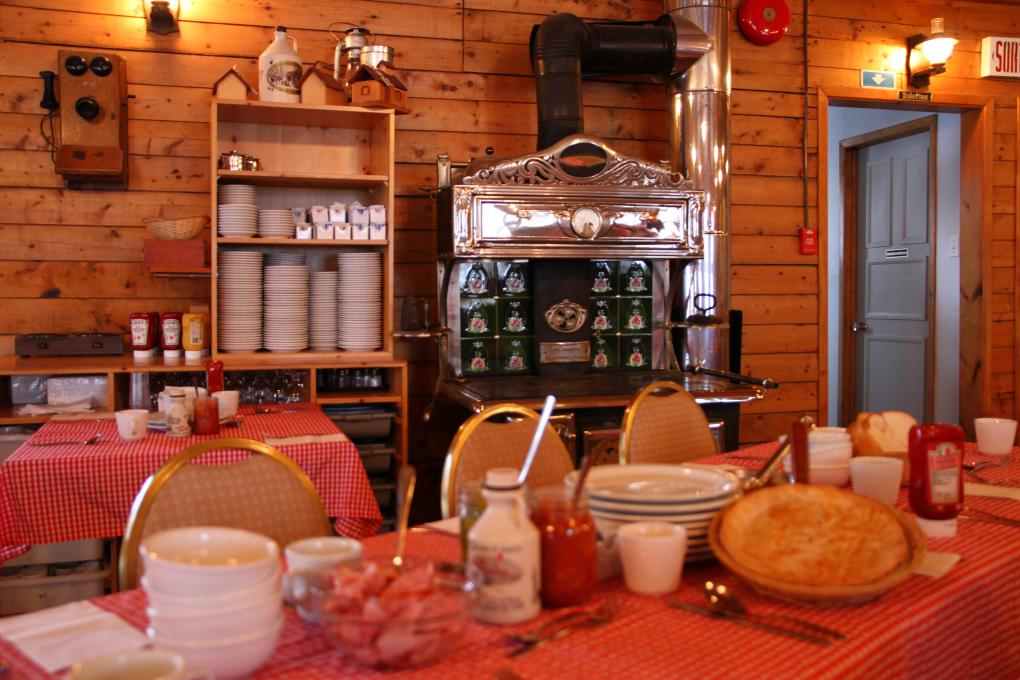
* Le Relais des Pins
This typical sugar shack offers a wide selection of maple products as well as frozen dishes for takeout year-round.
Sucrerie Blouin
Located on the banks of the St. Lawrence River, Sucrerie Blouin taps trees using traditional methods and boils the sap over a wood fire, just like in the old days.
Sugar shacks elsewhere in the Québec City region

Cité Agricole
This farm-turned-modern sugar shack offers a menu blending authentic flavours with a gourmet twist during the sugaring season. A mini-farm and inflatable games provide entertainment for children.
* Érablière du Lac-Beauport
This family-owned sugar shack, passed down from generation to generation, offers an authentic experience enriched by the presence of a maple-themed museum and an interpretation center on Québec wildlife.
* Érablière le Chemin du Roy
The highlights of this traditional sugar shack include hearty meals, interpretive tours, and horse-drawn sleigh rides.
La Cabane Festive Au Chalet en Bois Rond
This sugar shack is operated according to ancestral methods, where it's even possible to witness the barrel being pulled by a horse to bring maple water to the shack.
Cabane à sucre Chabot
This family-owned sugar shack goes all out to provide a traditional experience.
* Grand Marché de Québec
Some maple producers are present year-round to sell maple-derived products at the Grand Marché. The market also hosts an urban sugar shack when the sugaring season is in full swing (March-April).
What is a Traditional Sugar Shack Meal
 Érablière du Lac-Beauport
Érablière du Lac-Beauport
A hearty all-you-can-eat feast awaits when visiting a sugar shack. Most sugar shack menus include soupe aux pois (pea soup), fèves au lard (baked beans), cretons (a spread made with minced pork and spices), oreilles de crisse (“Christ’s ears”, deep-fried pork jowls), omelettes, ham and sausages soaked in maple syrup, tourtière (meat pie), pickled beets, homemade red or green fruit ketchup, crêpes and, of course, a jug of maple syrup. For dessert? Some sugar shacks also add tarte au sirop d’érable (maple sugar pie) or grands-pères dans le sirop (a ball-shaped dough cooked in boiling maple syrup) on the menu.
Try not to fill up though, you’ll want to save room for the all-you-can-eat maple taffy that awaits outside!
How Maple Syrup is Made
Maple water is produced during spring through thawing and freezing when days are above 0ºC (32 F) and nights are below 0ºC (32 F). These stages create a pressure that allows the maple water to flow, which can then be tapped and collected.
Through the various stages of evaporation, maple water reduces into réduit (similar to sweet tea), then maple syrup, maple taffy, maple butter, soft maple sugar, and eventually hard maple sugar.
A Delicious Souvenir
Maple syrup is similar to olive oil as there are various grades and colours of maple syrup. From light golden yellow which has a subtle sweetness to dark earthy amber with a richer taste.
How to Use Maple Syrup
While many reserve the use of maple syrup for pancakes or waffles, in Québec it is a natural sweetener that is a must in every pantry. Maple syrup can be used in all kinds of recipes from casseroles to sauces, salad dressings and meats. Of course, it is often used for cooking desserts and drizzled into coffee or tea.
A Brief History of Sugar Shacks
The collecting of maple water to use as a sweetener was first practiced by indigenous peoples who would tap maple trees each spring.
Collecting maple water and turning it into maple syrup has been a familial tradition since its inception. During the sugaring-off season, days were filled with trudging through the snow to collect maple water from buckets. At night, families would gather for a meal of hearty homemade delights. As the food disappeared from the table, the house would fill with the sounds of fiddles and spoons, everyone drinking and singing. In time, the gatherings became too large to celebrate within a single house, and they eventually moved the fun into large wooden barns.








